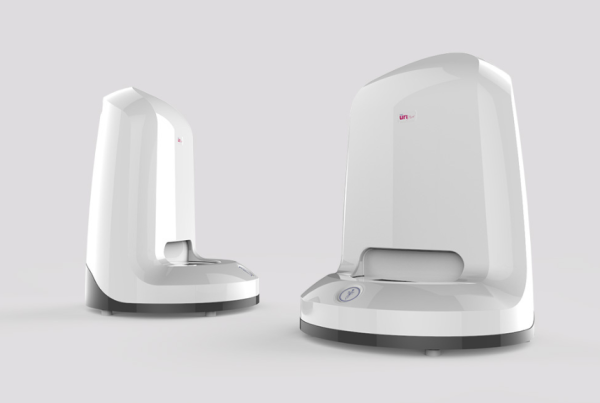As experts in the design of sports and fitness equipment, our MD Iain was recently approached by renowned technology blog Wired to comment on the issues Peloton are having with their treadmills;
https://www.wired.co.uk/article/peloton-treadmill-recall-design
“Weeks after Peloton called an American consumer commission’s warning about safety risks on its treadmills “inaccurate and misleading” following repeated reports of incidents and one death of a child because of the equipment, the company was forced into a dramatic U-turn. “I want to be clear,” Peloton CEO John Foley said in a statement announcing the worldwide recall of the company’s treadmills. “Peloton made a mistake in our initial response to the Consumer Product Safety Commission’s request that we recall the Tread+. We should have engaged more productively with them from the outset. For that, I apologise.”
The recall – around 125,000 Peloton Tread+ treadmills have been recalled in the US alone – is more than just a blemish on Peloton’s reputation. It’s also affected the company’s bottom line, with the recall and refunds expected to cost it $165 million. But was Peloton’s multi-million dollar disaster inevitable? What caused the safety issues, and could they have been easily fixed? And why did they happen in the first place?
Treadmills aren’t especially dangerous: three people die on them in the United States in an average year, and though a further 24,400 are injured – usually a sprained ankle or scraped knee – every year, they’re considered to be safe if properly used.
“The difference [between the Peloton and other treadmills] is a few things,” says Laura Miele, an American treadmill safety expert. Because Peloton users often connect to livestreamed classes as part of a bolt-on subscription in addition to the £2,295 the Peloton Tread costs in the UK, it requires a larger screen than most treadmills.
Jo Barnard, CEO of industrial design agency Morrama, agrees. She points out that Peloton recently received investment, and may have felt pressured to roll out a range of new products to meet investor expectations. “There may have been a pressure to speed things up,” she says. And she points out that the treadmill’s release came during the pandemic. “Undoubtedly there would have been challenges: the majority of the team might not have been able to be at the factory, carrying out tests – and the challenge with a product this size is that there’s a cost factor to ship things from one country to another.”
Iain McCall, an industrial designer and partner at 4D Products, a UK-based company that has previously designed exercise equipment, points out that the number of faulty screens is only a small proportion of all the treadmills Peloton has sold. “It’s not like they’ve got it massively wrong, but that leads you to think it is a fault with the manufacturing process itself,” he says. Yet Peloton could have insulated itself from risk by making small changes at the point of design. “Once you’ve designed that clip and decided between it being three millimetres thick or four millimetres thick – which would make it much, much stronger – the cost differential for manufacture is next to nothing,” he says.
Another risk highlighted by safety inspectors who ultimately judged the Tread and Tread+ as unsafe without a product recall was its running belt. While most treadmills, including the Tread device sold in the UK, have a single, whole rubber band that rotates around the wheels of the treadmill to keep users in one place while they run, the Peloton Tread+ that was until recently on sale in the US breaks that band into thick rubberised slats. “That gives people the opportunity to have a little more give when they run – as opposed to non-Peloton treadmill belts,” says Miele.
The slatted band on the US Tread+ is a safety risk, reckon regulatory bodies, because people can fall between them. Of more concern – and the cause of the death of a child with a Peloton Tread+ – is the height of the machine, and the risk of users being flung off the back of the equipment or sucked underneath.
“Peloton, should have specific warnings about this, as opposed to just having information of how much space should be around [the treadmill],” says Miele. Treadmill manufacturers must state what risks users face, and what they have to do to mitigate those hazards. “Peloton is going to have to do something to fix this, but will also have to provide warnings to not have animals or young children around the treadmill,” she says.
As to why the issue wasn’t identified until someone died as a result, McCall thinks it could be a quirk of the testing and safety process. McCall reckons the device includes a lot of bespoke components because of its unique design, which would be crafted through computer aided design, then undergo rigorous product safety testing. Every aspect of a machine is tested, says McCall: want to run some equipment off mains electricity? It requires an electrical safety test before it can be sold in the UK.
“I can’t imagine they’ve not been through a product safety testing process,” he says. “The one thing I wondered was maybe in a product safety testing place, they don’t have pets or kids wandering around. It’s a sterile working environment. Maybe that’s the reason it wasn’t picked up.”
“It feels like a bit of an oversight on their part,” says Barnard. “One of the main things we do when we work on equipment is the context of use. You have to imagine, and spend time in that home environment, where products are going to be used, and think about what’s going to be around. None of us in the team have kids, but we have pets – they notoriously rub up against things, and you can’t control them. It feels like there’s a lack of consideration for that context.”
It’s easy, with the benefit of hindsight, to say that the issue should have been picked up before now. But if it had been, a fix would not be that costly, reckons McCall. A small plastic guard, skirting the back of the treadmill, designed to stop animals or children – or adult limbs – being sucked underneath the back of the equipment may cost $30,000 to produce the tooling for in China, he says. “There is an investment up front, but for a product like that treadmill, as a percentage of the total tooling cost, it’s small. Then each part might cost $3 or $4 to mould it.”
“The component price would be relatively small once you’ve paid for that initial tooling,” says Eilbeck. The sums don’t add up, McCall believes – and form may have come before function. “The price in terms of doing it is low, compared to the cost they have to pay now for the recall and the reputational damage,” he says.
“There’s a way to mitigate that hazard without it compromising the use of the belt or the treadmill,” says Miele. “I believe some of the reason equipment is compromised is manufacturers are looking for ways to cut costs. The hardware they might have been using for the screen, for instance, might not have been the sturdiest or most expensive because then it’s expensive for them and becomes expensive for the consumer.”
Some safety aspects may not have cost Peloton any money on tooling or manufacture, such as, alongside the existing magnetic kill switch on the treadmills, implementing a mandatory passcode as the only means to unlock the equipment and start the Tread running.
Peloton declined to answer specific questions for this story, including why the issues with the Tread and Tread+ happened, whether it could have designed its treadmills differently to avoid the issues raised, and to what extent it balances looks and function when designing its products. A spokesperson for the company reiterated the global recall and urged all Tread and Tread+ owners to stop using the products until they have been repaired.”
Wired.co.uk – 12/5/2021











